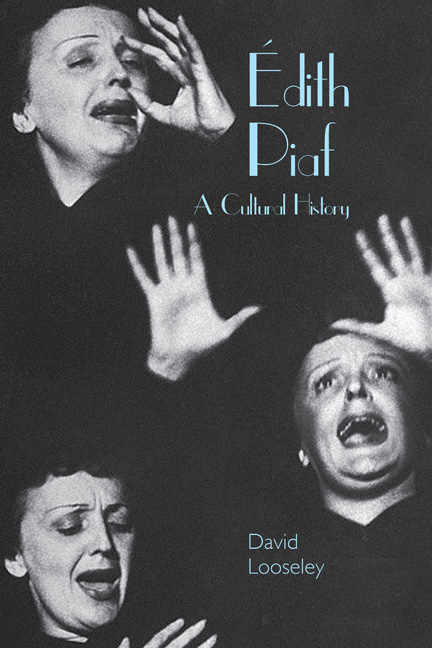2 - Piaf and her public
from Part I - Narrating Piaf
Summary
Whatever the original hopes or intentions of Asso, Monnot and the singer herself, the imagined Piaf was only forged in the crucible of public consumption. It's her public meanings from 1935 to 1945 that I'm concerned with here: what were audiences at her early performances hearing and seeing?
For a long time after those first two memorable engagements at the ABC in 1937, Piaf performed in both cabarets and the larger music halls, even featuring in revues occasionally. Never shy of hard work, she would sometimes go from one kind of venue to another in one evening. In spring 1943, for example, she featured in a revue at Montmartre's Casino de Paris, then switched immediately to the nearby cabaret La Vie en rose, in the basement of the Théâtre Pigalle. In the process, she barely altered her act, apart from cutting one or two of the more theatrical numbers for the cabaret. In music hall, she shared the bill with variety performers, but by the early 1940s a new mode of performance was available to her. In September 1940, she did her very first solo concert at the prestigious classical venue the Salle Pleyel. But in all three types of venue—cabaret, music hall and concert hall—her self-presentation was essentially the same. She performed intimacy rather than spectacle, foregrounding the lyrics and the emotions they contained. ‘In a song’, she later declared, ‘the lyrics are what interest me first.’
And yet in the impressions recorded by observers of Piaf's earliest performances, at Le Gerny's, Bobino and the ABC and on her first recordings, it wasn't the lyrics that seized the attention but the voice. What's especially revealing are the verbal acrobatics deemed necessary to communicate these impressions, for the uniqueness of that voice seemed almost to defy description. This is well illustrated by Pierre de Régnier's virtually synaesthetic account of a performance at Le Gerny's in 1935:
And then that voice, that cold voice, the colour of oysters being opened in wet baskets in front of bistros, that indefinable voice, husky and full, at once ordinary and unique—ordinary but unique, I should say—that moist, nasal, still child-like and yet already despairing voice grabs you in the pit of your stomach, inexorably, just when you'd stopped thinking about it.
- Type
- Chapter
- Information
- Édith PiafA Cultural History, pp. 45 - 64Publisher: Liverpool University PressPrint publication year: 2015

